‘Pray the hurricane never comes’: Living under sea siege in Louisiana
For years people living on the marshy Mississippi Delta have fought rising seas and coastal erosion – but they are losing the battle.
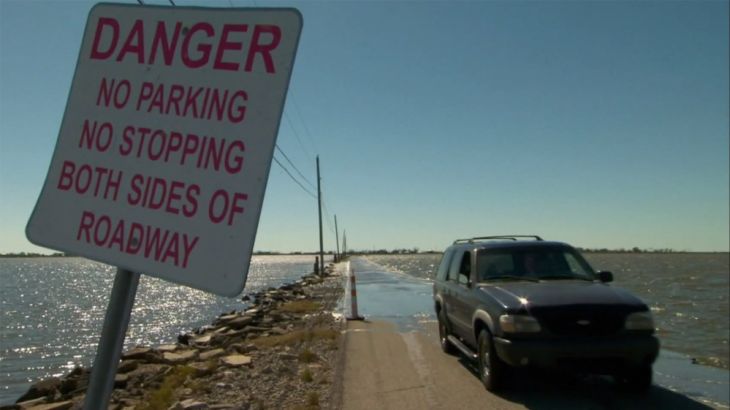
“We are just a hurricane away from annihilation.”
Imagine living your life with that threat persistently looming. Back in 2009 that was the deeply felt fear expressed by many living in the coastal communities of the Mississippi Delta in Louisiana.
Keep reading
list of 4 itemsScientists say Oman, UAE deluge ‘most likely’ linked to climate change
Photos: Deadly floods wreak havoc in Kenya’s capital
China evacuates over 100,000 as heavy rain continues to lash south
Everyone had just come off the back of a run of devastating hurricanes – Rita and Katrina in 2005 and Gustav and Ike in 2008. The future for many felt hopeless.
When we filmed our documentary Losing Louisiana in the sweltering swath of bayou and swamps a decade ago, the detritus of destruction was still all around. You would see smashed up wooden walkways, uprooted trees, wrecked fishing boats, the odd dinghy up in a tree where it had been blown.
Children played among it all, and you wondered for their future. So 10 years on, we went back to see.
The disappearing delta
The Mississippi River drains 41 percent of the United States. Until mankind pitched up, the river’s flow recharged the Mississippi Delta with huge volumes of sediment from annual floods, nourishing and building the marshlands, extending new fingers of land out into the Gulf of Mexico.
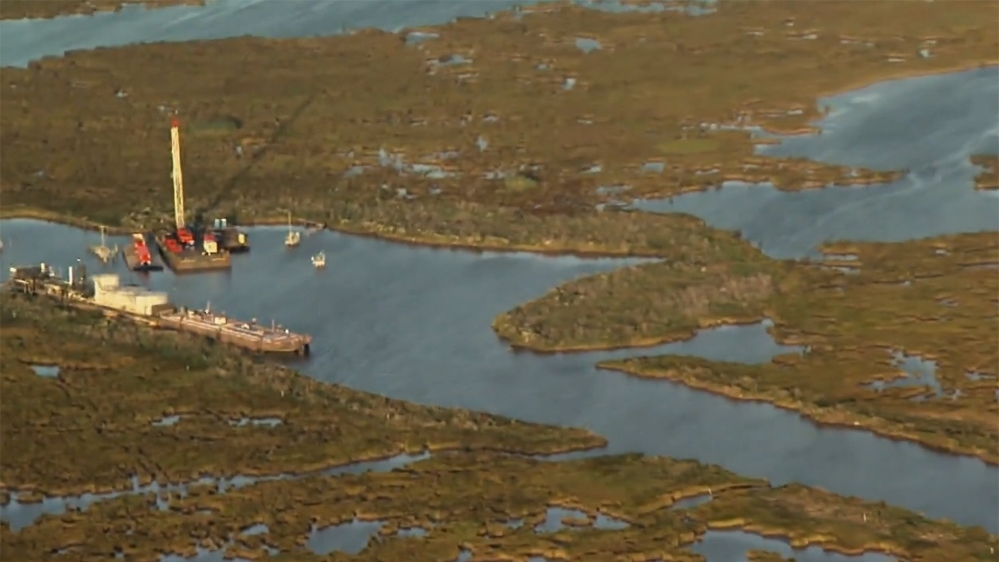
But floods and man do not mix. So since the 1700s we have been building levees and walls and flood defences.
Today the Mississippi is corralled between banks of concrete and earth running hundreds of miles. That means the sediment disappears straight into the Gulf and no longer recharges the Delta.
As a result, the marshlands have been depleted, with land now disappearing at an astonishing rate of a football pitch an hour. And that not only takes away a crucial defence against big weather events – it also destroys communities.
‘Now there’s only water’: Living on Isle de Jean Charles
Back in 2009 we drove along a narrow strip of tarmac to a sliver of land called Isle de Jean Charles, about an hour southwest of New Orleans. Water lapped at the roadside, wooden electrical poles stood part-submerged in the Gulf of Mexico.
Isle de Jean Charles has been the homeland of the Biloxi Chitimacha Choctaw Indian tribe for more than 170 years. Their ancestors arrived in the 1830s, fleeing persecution after the Indian Removal Act became law. Once political refugees, these people are again being forced to move, this time by rising waters.
Ninety-eight percent of the surface of Isle de Jean Charles has been enveloped by water since 1950.
On our return a decade on, we found a village slowly being returned to nature. Creepers were enveloping the stilts of empty wooden houses and entwined up the pillars of old porches. Spanish moss hung from the few remaining trees stirred in the breeze, a roadside mailbox was just perceptible in the overgrown foliage; all around water glinted.
Elsewhere a few houses looked well kept and lived in but we found these were mainly run as fishing camps. The original community of perhaps 400, is now down to 20. People have left and the tribe has been split apart.
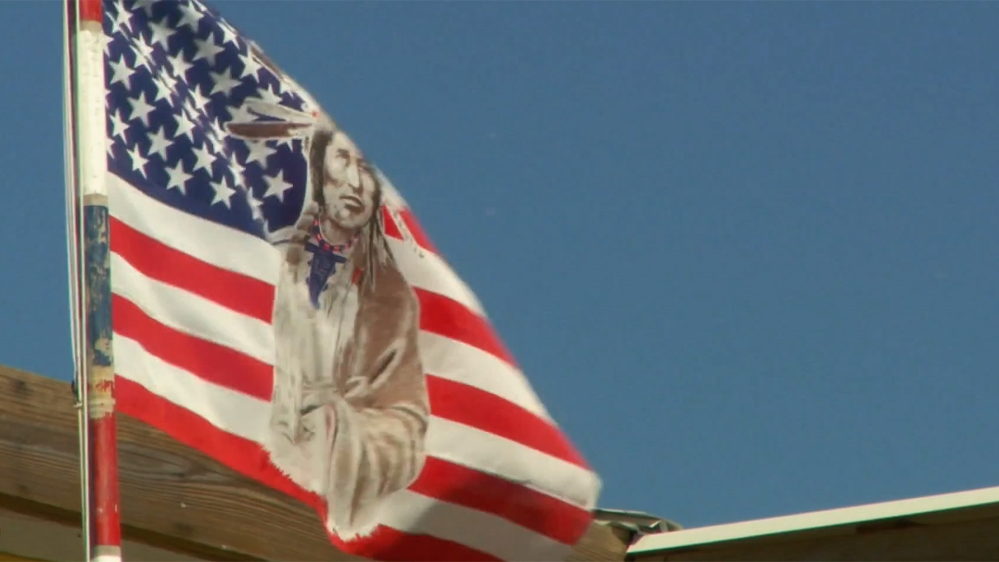
I met up with Chris Brunet on his deck. He has lived here all his life. So did his parents. And their parents before that. And theirs too.
“You know once you could sit here and look out over trees and pasture,” Chris said. “We had crops and cattle grazing where now there’s only water.
“Many people have had enough with the annual process of clearing up after storms and have left. It’s real heart-breaking for the tribe to be losing connection like this.”
Chris told us those few remaining inhabitants have, like himself, found it next to impossible to leave, such is the physical connection to their ancestral homeland. He recognises, though, that the time will come.
And just to demonstrate the world Chris and his neighbours live in – days after I returned home, I read how the effects of yet another hurricane had once again deluged the island. Chris and his remaining neighbours were airlifted to safety by rescue helicopters. This used to be an occasional occurrence, now it happens pretty much every year.
For the record, they went straight back home once the waters receded.
A perilous mix
Take to the skies and you can clearly see what is happening. Looking down you see vast tracts of water shimmering in the evening sun. This was once a blanket of green, a labyrinth of marsh and swamp that created a natural defence against storm surges.
Through time, deep channels have been cut for oil pipelines, and land has subsided. Throw in climate change and sea level rise and you have a perilous mix.
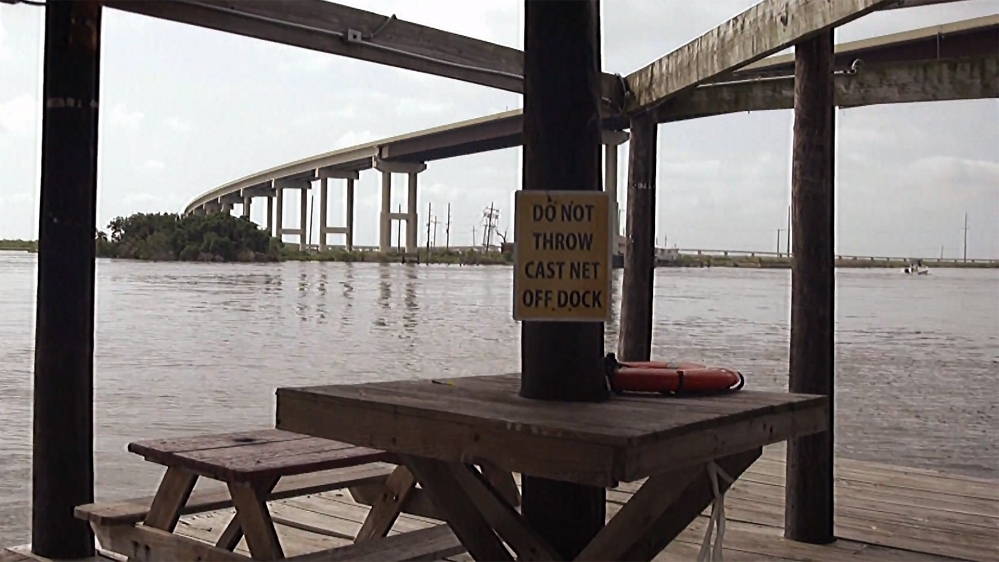
Fear of the future
In a land where you have to climb a staircase four metres higher than the ground below to reach people’s living areas, you can see how people are used to dealing with the elements. But the strain is pushing some to their limits.
I revisited the small town of Leeville where, 10 years ago, we had motored in a small boat over the old town cemetery. Tombstones poked out of the waters of the Gulf like a ghastly warning to an impending future.
This time, I met up with 64-year-old Phyllis Melancon who has lived here nearly all her life, living off the bounty of the marshes with her family and running the Bada Bing bait shop. Her home is right on the water.
After a lifetime of hurricane clear-ups Phyllis has seen it all. She is tough and clearly resilient but the emotion welled up as she told us how she knows the advancing seas spell the end.
“My fear is one day we will have to leave and never return,” Phyllis said. “We won’t have anything to return to, I see it soon. Very soon. My fear is the next big storm will wipe us out.”
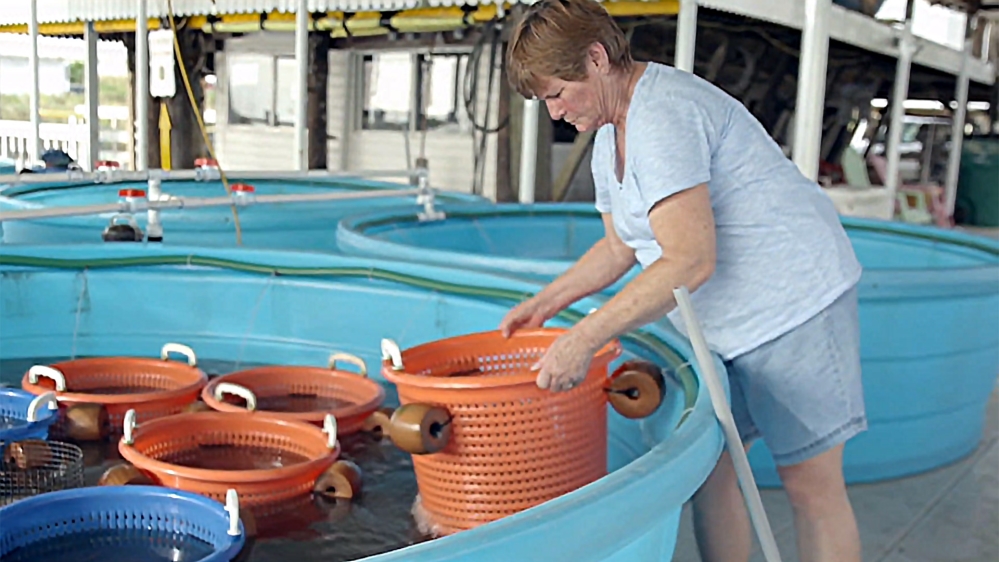
As time goes on, more hard choices will have to be made, not least by the authorities. People like Phyllis and the remaining residents of Isle de Jean Charles live outside the levee protection zone.
Recently I heard how Chip Kline, chairman of Louisiana’s Coastal Protection and Restoration Authority, had said that the state government will continue to work to make south Louisiana as resilient as possible but that some areas will be surrendered to the sea.
“Over the next several years there are going to be difficult conversations with some of the communities that live in areas that are simply not sustainable,” Kline said.
Remember this is not Bangladesh or the Pacific Islands, whose vulnerability to sea level rise is frequently cited. This is the United States of America, the most powerful country on Earth.
To me what is happening here is a glimpse into the future of what hundreds of millions will face, from the US to Europe to Asia, as waters inundate coastal cities and communities, if nothing is done.
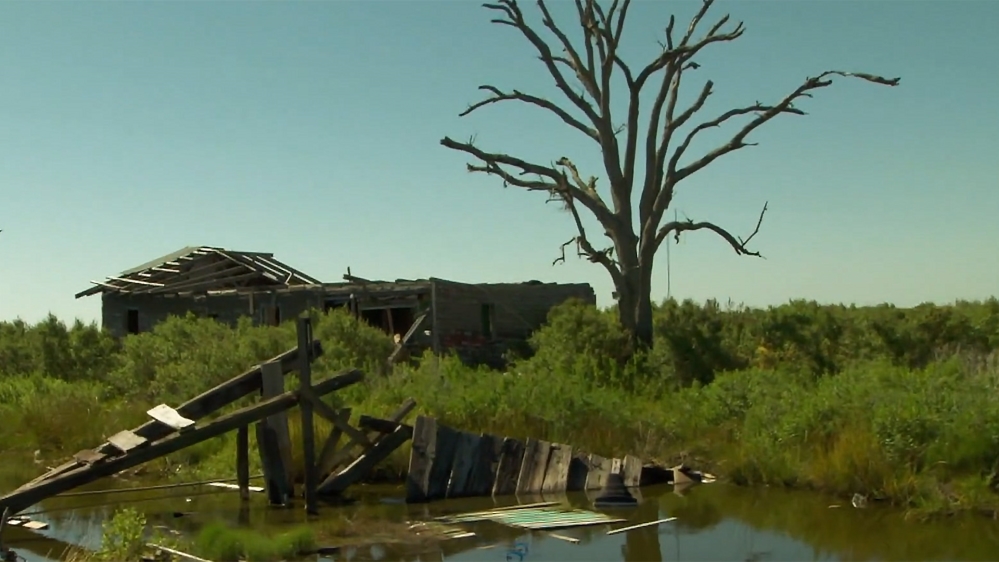
What is happening in southern Louisiana is this creeping, gradual, relentless erosion not only of land but of communities, of people’s sense of dignity, safety and security.
It is a remorseless assault which a few hardy souls stand up to but all ultimately know the sea will win.
And why – because we dredged, we drilled and we dodged responsibility. If you are lucky you live in a levee protection zone. For those who do not, you look to the skies and pray the hurricane never comes.